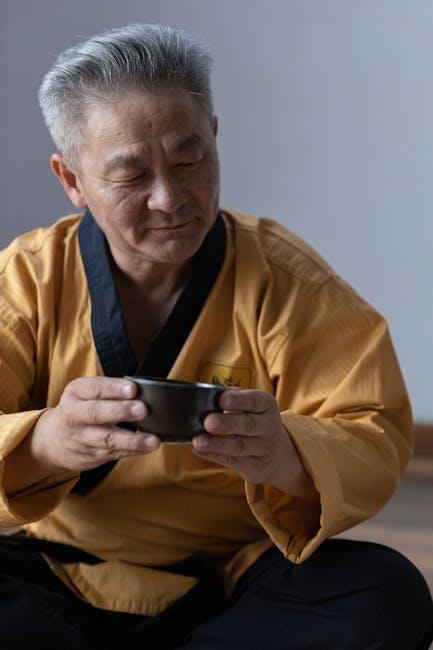In an era where the cacophony of modern life often drowns out the whispers of inner peace, mindfulness has emerged as a beacon of tranquility, guiding individuals toward a state of serene awareness. Yet, as its popularity swells, a curious debate has surfaced: Is mindfulness a genuine path to self-discovery, or merely a sophisticated form of escapism? This article delves into the heart of this intriguing question, exploring the delicate balance between presence and avoidance. By examining the roots and practices of mindfulness, we aim to uncover whether it serves as a refuge from reality or a deeper engagement with the world around us. Join us as we navigate this complex landscape, seeking clarity in the blurred lines between mindfulness and escapism.
Exploring the Intersection of Mindfulness and Escapism
In a world where the constant barrage of information can feel overwhelming, many individuals find solace in mindfulness practices. This ancient art of cultivating presence and awareness offers a refuge from the chaos of daily life. However, some may wonder if this focus on the present moment serves as a subtle form of escapism. While mindfulness encourages individuals to acknowledge their thoughts and emotions without judgment, it does so with the intent of fostering a deeper understanding of oneself rather than avoiding reality. The practice can be seen as a pathway to self-awareness, rather than a means of evading the challenges life presents.
- Mindfulness as a Tool for Clarity: By embracing the present moment, mindfulness allows individuals to gain clarity and insight into their thoughts, enabling them to respond more effectively to life’s challenges.
- Escapism through Distraction: Unlike mindfulness, escapism often involves diverting attention away from reality through activities like binge-watching shows or indulging in daydreams.
- Balancing Act: Both mindfulness and escapism can play roles in maintaining mental well-being, but it’s crucial to recognize when one is being used as a crutch rather than a tool for growth.

Understanding the Psychological Impacts of Mindfulness Practices
Delving into the realm of mindfulness practices reveals a tapestry of psychological impacts that can often be misunderstood as mere escapism. At its core, mindfulness is about cultivating a deep presence, enabling individuals to engage with their thoughts and emotions in a non-judgmental way. This awareness can lead to profound shifts in perception, allowing people to experience life with greater clarity and peace. However, it’s essential to distinguish this from the idea of avoiding reality. Mindfulness does not involve running away from challenges but rather facing them with a calm and centered mindset.
- Enhanced Emotional Regulation: By staying present, individuals can better manage their emotional responses, reducing the impact of stress and anxiety.
- Increased Self-awareness: Mindfulness practices encourage a deeper understanding of one’s thoughts and feelings, fostering personal growth.
- Improved Focus and Concentration: Regular mindfulness exercises can help sharpen mental faculties, leading to better productivity and decision-making.
These benefits highlight mindfulness as a tool for engagement rather than avoidance. By nurturing a mindful approach, one can navigate life’s complexities with grace, embracing both the joyful and challenging moments with equal acceptance.

Balancing Mindfulness with Reality: Navigating Potential Pitfalls
While mindfulness is a powerful tool for cultivating inner peace and self-awareness, it can sometimes lead to a detachment from reality if not practiced with caution. This delicate balance requires mindful practitioners to remain grounded and aware of the world around them. Here are some potential pitfalls to be wary of:
- Over-reliance on Mindfulness: When mindfulness becomes a primary method to escape uncomfortable realities rather than address them, it may serve as a temporary band-aid rather than a long-term solution.
- Neglecting Practical Responsibilities: In the quest for inner tranquility, one might inadvertently overlook everyday duties and responsibilities, which could lead to negative consequences in personal and professional life.
- Ignoring Emotional Signals: Mindfulness encourages non-judgmental observation of thoughts and feelings, but it’s crucial to recognize when these signals indicate deeper issues that require attention.
By recognizing these potential pitfalls, individuals can ensure that their mindfulness practice remains a supportive complement to reality, rather than an escape from it. Maintaining a balance between inner exploration and external engagement allows for a holistic approach to personal growth and well-being.

Cultivating Mindfulness for Grounded Living: Practical Recommendations
Integrating mindfulness into daily life doesn’t require monumental shifts; rather, it thrives in the small, consistent practices that anchor us to the present. Begin with simple breathing exercises: dedicate a few moments each day to focus solely on your breath, allowing each inhalation and exhalation to center your thoughts. This practice fosters a heightened awareness of the present moment, offering a refuge from the chaos of everyday distractions.
To further cultivate mindfulness, consider incorporating these practical techniques into your routine:
- Mindful Eating: Engage all your senses when eating. Savor the flavors, textures, and aromas, transforming meals into a meditative experience.
- Nature Walks: Spend time in nature, focusing on the sounds, sights, and sensations around you. This connection to the natural world can ground your thoughts and elevate your mood.
- Journaling: Write about your experiences and emotions with honesty. This act of reflection can help clarify thoughts and promote self-awareness.
- Body Scan Meditation: Regularly practice scanning your body from head to toe, acknowledging any tension or discomfort without judgment. This exercise encourages a deep connection between mind and body.
Embracing these practices can transform mindfulness from a theoretical concept into a tangible, enriching part of daily life, enhancing your ability to live with intention and clarity.
The Conclusion
As we draw the curtain on our exploration of mindfulness and its potential as a form of escapism, we find ourselves standing at a crossroads of introspection and reality. Much like the gentle ebb and flow of a mindful breath, the answer isn’t bound to a single exhalation or inhalation but resides in the delicate balance between presence and evasion. Whether mindfulness serves as a bridge to deeper self-awareness or a temporary refuge from the tumult of daily life, ultimately, it is a personal journey—one that invites us to pause, reflect, and perhaps discover a new facet of our existence. As we step away from this discourse, let us carry forward the essence of inquiry, mindful of the choices we make in seeking solace and understanding in our own lives.
